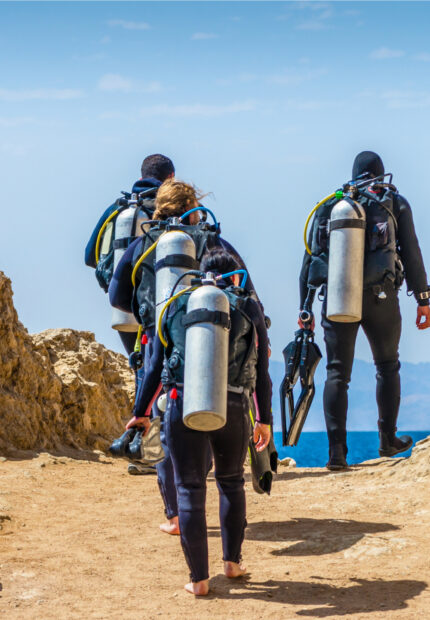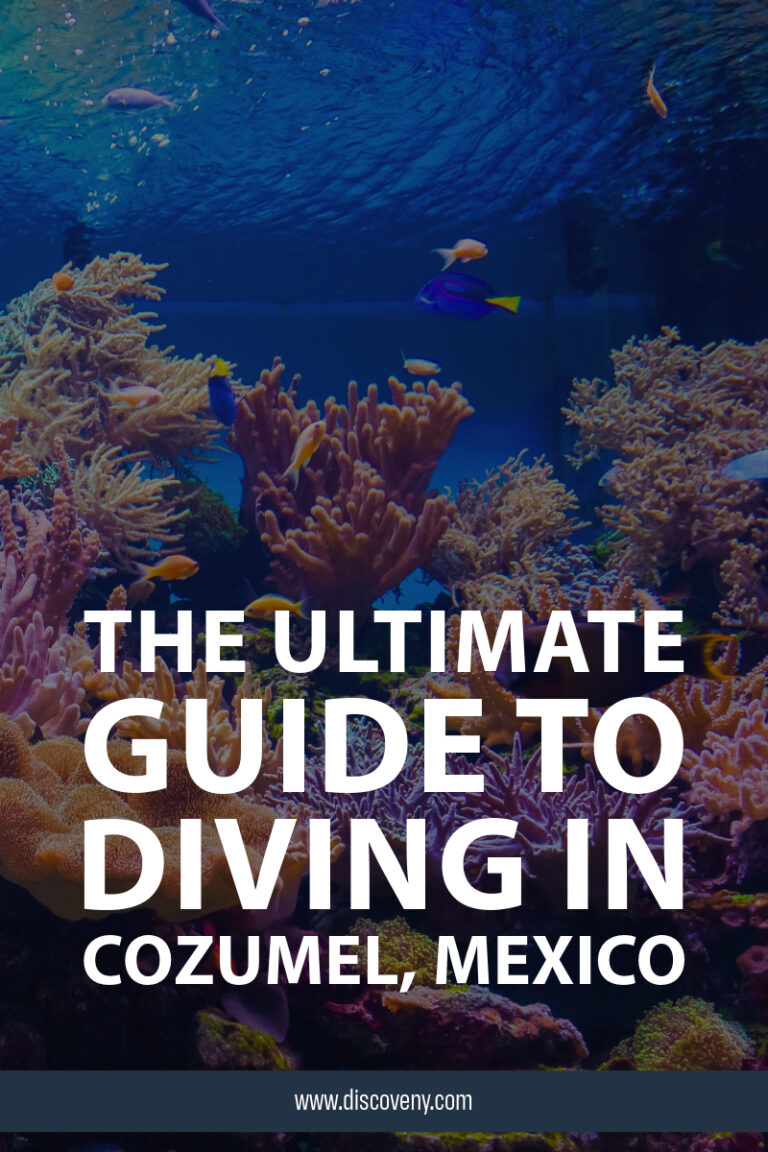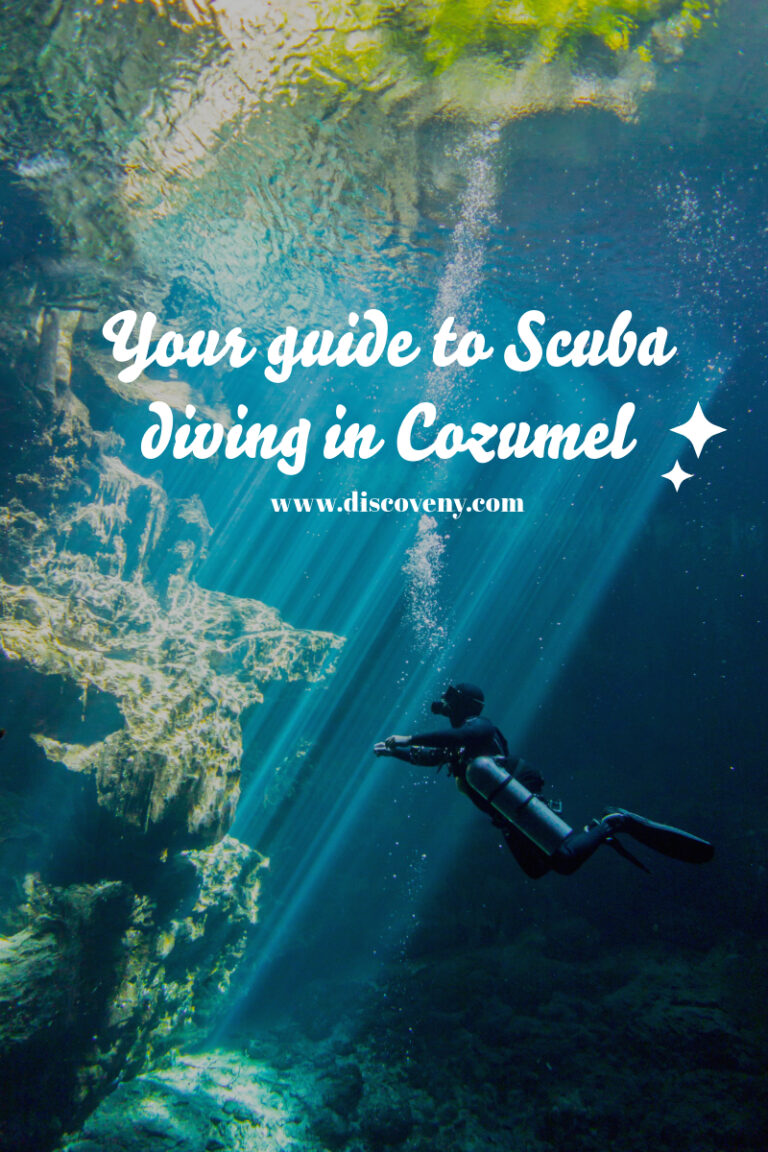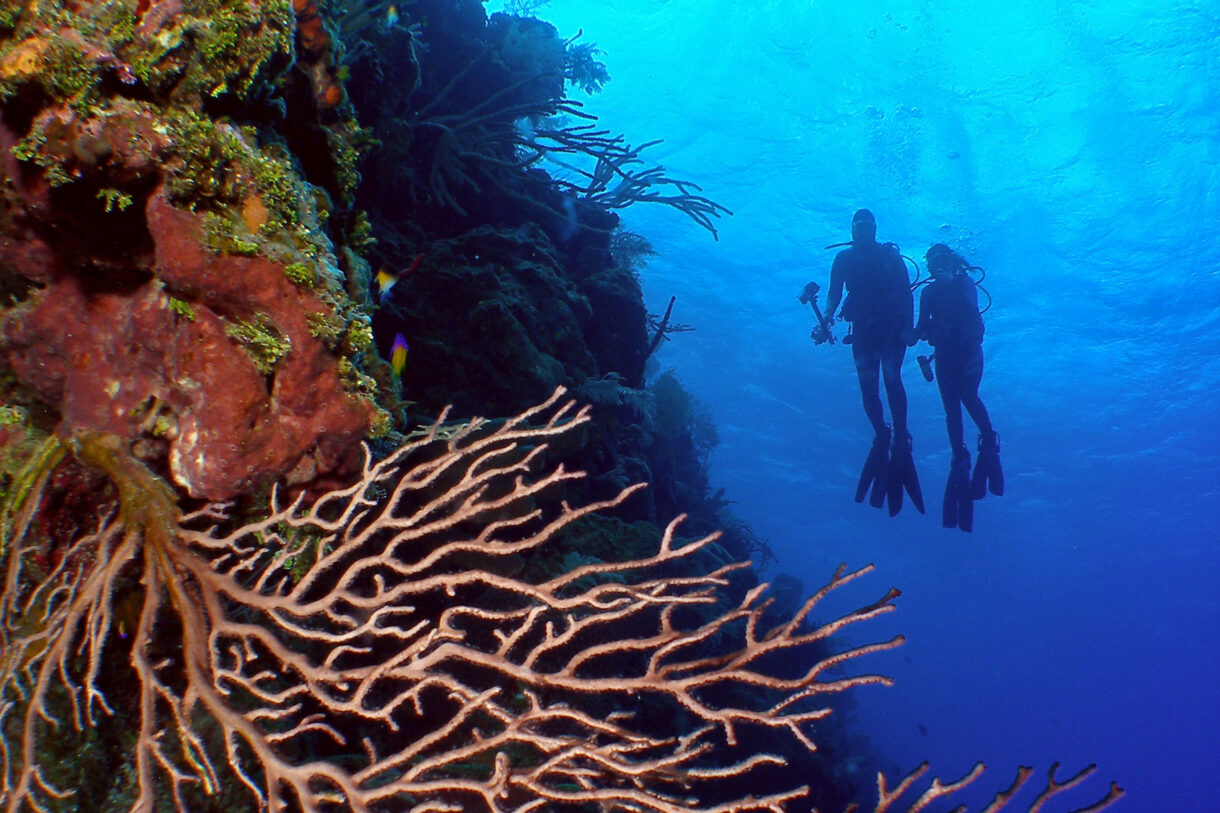
The Ultimate Guide to Diving in Cozumel, Mexico
This guide to diving in Cozumel will explain everything you need to know about diving in Cozumel, Mexico. From finding the right company to booking a dive trip, and including guidelines for ethical diving, what to bring and other activities to explore in Cozumel, we’re here to make sure you have an ethical and responsible dive trip in Mexico without compromising on the fun!
Mexico is among the cheapest places in Central America to get PADI certified, along with Honduras! And if you’re already certified, don’t worry! There’s a whole world to discover here for certified divers.
Let’s face it, Cozumel is a backpacker dive paradise. People flock to the Yucatan Peninsula and Riviera Maya every year to dive. Finding information on diving in Cozumel? Easy. There are so many blog posts out there. Finding information on sustainable and ethical diving in Cozumel? Much harder. None of the posts we found answered our burning question: which dive companies practice ethical and responsible wildlife tourism? So, we made this Ultimate Guide to Diving in Cozumel to make it easier for you.
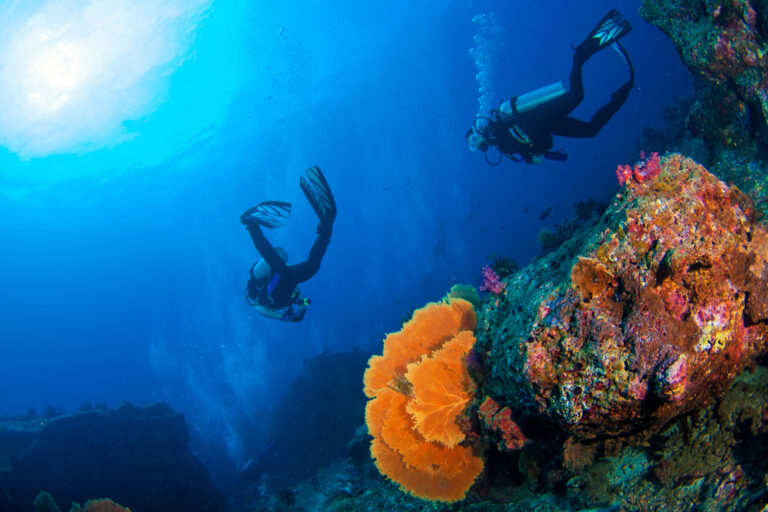
Colourful reef on our advanced diving course
WHY GO DIVING IN COZUMEL?
Why visit Cozumel for diving? The answer is simple. It’s budget-friendly (as far as diving goes) and there’s so much to do and see. From whale sharks to bull sharks, and from turtles to stingrays, you’re sure to have incredible wildlife encounters.
The Mesoamerican Barrier Reef stretches from Mexico to Honduras. This UNESCO World Heritage Site is the second largest barrier reef, after the Great Barrier Reef in Australia, and offers some of the most amazing snorkelling and diving in the world. The waters are warm, the visibility is incredible, and there’s so much to see.
Cozumel is a diver’s paradise. Just a short boat ride from the mainland, Cozumel feels a world away from the tacky, touristy resort areas of Cancun and Playa del Carmen. The main town, San Miguel de Cozumel, has everything you need as a backpacker, with accommodations and restaurants to suit every budget.
No matter how far along you are in your diving journey, Cozumel has something to offer everyone. There are shallow dives, deep dives, technical dives, and drift dives. You can choose shore dives or boat dives, depending on your budget There are also so many dive schools, which helps to keep the costs competitive.
Don’t dive? Don’t worry, we’ve got you! You can snorkel in Cozumel too, and spend the entire day swimming alongside stingrays, turtles, and nurse sharks without needing a dive certification at all! It’s almost as good!
WHAT MARINE LIFE WILL I SEE WHEN DIVING IN COZUMEL?
Mexico’s waters are home to an astonishing array of marine life. From bull sharks to whale sharks, there’s more than enough large life to keep an eye out for. We saw moray eels, turtles, dolphins, an octopus and flying fish!
Keep your eyes peeled for the hundreds of colourful reef fish darting among the corals. There’s one particular spot where graceful eagle rays frequent, and you can dive and snorkel alongside them as they glide through the water. Turtles are a common sight in Mexico, we saw ‘Charlie’, who is an estimated 80 to 100 years old. There’s also a very predictable Moray Eel, who shares a cave with a nurse shark.
Whale sharks also visit the Mexican section of the Mesoamerican Barrier Reef. You have a higher chance of spotting them near Cancun or Isla Holbox, but you may still see them near Cozumel if you’re lucky!
WHAT ARE DIVING CONDITIONS LIKE IN MEXICO?
Mexico has great conditions for SCUBA diving year-round. Even the rainy season (June to November) has minimal impact on the conditions when diving in Cozumel.
Cozumel is a diver’s dream: crystal clear waters and comfortable temperatures year-round. The visibility is usually fantastic (up to 30 metres/100 feet). The water is warm, at a comfortable 25-28ºC (78-82ºF), with slight dips in winter. But you can still swim in a short or long wetsuit year-round.
There are a variety of dive sites of different depths, and enough to suit all levels of diver. This makes Cozumel an interesting place to dive no matter what your abilities are. Cozumel is renowned for its easy drift diving in particular, perfect for beginner divers
Here are some ideas of how the diving conditions change throughout the year to help inform your trip:
Summer (May-September):
- Temperature & visibility: warmer oceans with good visibility
- Ideal for: Divers seeking comfortable waters and calm conditions and typical reef life
- Highlights: Fewer crowds, perfect for relaxed exploration of Cozumel’s vibrant reefs. Potential for whale shark encounters! A dazzling array of fish, turtles, and coral formations.
Winter (November-March):
- Temperature & visibility: slightly cooler water temperature but still comfortable in a wetsuit, with good visibility
- Ideal for: Experienced divers looking for big wildlife encounters
- Highlights: The usual wildlife, plus increased sightings of bull sharks and eagle rays.

Awesome underwater find to document our adventure
HOW TO FIND A COMPANY TO GO DIVING IN COZUMEL?
This was something we struggled with when doing our research. There are so many dive schools in Cozumel – far more than you could feasibly research. It’s hard to know where to start, especially if you’re looking for a sustainable and wildlife-friendly dive centre.
We won’t cover every single dive centre here, but we will share some things to look out for when choosing a dive centre.
When choosing a dive centre, there are a few basic things to consider:
- Group size: For the best experience, you want a smaller group size. We’ve found the best dives were in groups of 2 to 4 people.
- Cost: It’s important to go with a dive centre within your budget. If you want to do multiple dives, check out dive packages for a better deal.
- Safety: Inspect the quality of their dive equipment. You don’t want to skimp on safety. It’s alright if equipment isn’t brand new, but you don’t want to see broken equipment or rusting pieces.
- Knowledgeable and experienced staff: You’ll probably be diving with a divemaster, who is responsible for the group. Make sure they’re knowledgable, qualified, and can communicate in a language you understand.
- Reviews: other people’s experiences go a long way towards helping us make decisions. Read TripAdvisor or Google Reviews, or chat to travellers in your hostel, to get an idea of where to look into and where to avoid.
Once you’ve narrowed it down, look for an operator with a clear commitment to protecting the environment. Some dive companies state their policies towards sustainable and eco-friendly diving on their websites. But eco-friendly and sustainable diving could also look like:
- A dive instructor or divemaster who looks out for, and corrects divers who are not practicing good buoyancy
Dive centres that brief divers on eco-friendly and responsible diving alongside the generic pre-dive brief
Smaller dive groups, which are easier to monitor
Dive centres that has environmental practices, such as using resuables instead of single-use plastic between dives and minimising water and electricity consumption
Enforcing the use of reef-safe sunscreen or providing full-length wetsuits or rash guards as alternative sun protection (reef-safe sunscreen is a legal requirement in some places in Mexico!).
A company that supports marine conservation and scientific research projects
The boats you dive from use mooring buoys instead of anchoring on the seabed.
Employing local people and not relying on international dive instructors
WHAT DID WE DO IN COZUMEL?
We did our PADI Advanced Open Water Course with Barefoot Dive Center, based on positive recommendations from a couple of people we met along the way.
Barefoot states their commitment to environmental conservation on their website, actively working to protect and preserve Cozumel’s reef and wildlife. They participate in beach cleanups and coral reef restoration and work with local organizations to support community projects in Cozumel.
When diving, they enforced rules for divers, making sure that no one applied sunscreen right before the dive, that everyone understood the guidelines for swimming with wildlife, and ensuring everyone had good buoyancy to avoid damaging the corals. Group sizes were small, and we had a great time.
Check them out if you’re looking for a place to start!
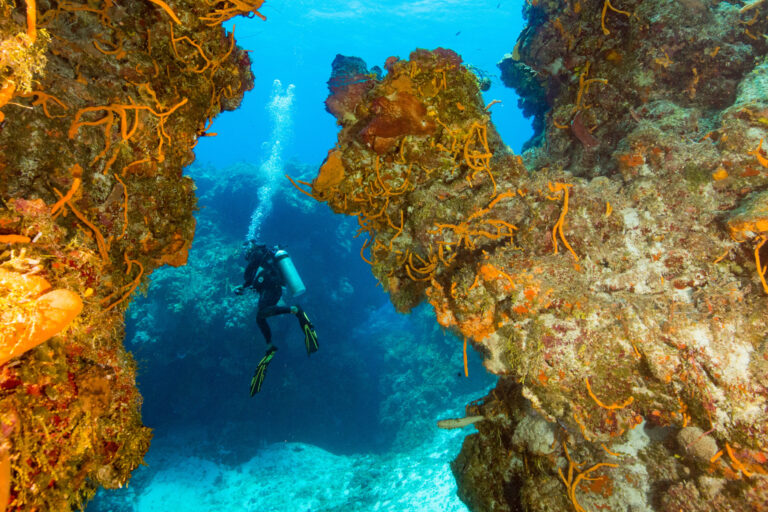
Coral walls and drop-offs are common in Cozumel’s dive sites
HOW MUCH DOES IT COST TO GO DIVING IN COZUMEL?
Mexico is one of the most budget-friendly places to dive. Whilst it’s not as cheap as Honduras’ Bay Islands or Egypt’s Red Sea, it’s still a fairly affordable dive destination. Especially considering the proximity of Cozumel to popular resort tourism cities, which makes it easy to jump on an affordable flight from the USA or Europe.
Prices typically range from $50 USD to $90 USD per dive, depending on factors such as location, equipment rental, and certification requirements.
Remember, it’s normal for dive shops offer package deals for multiple dives, which can bring down the overall cost of your underwater adventures. Sometimes you can even split these between two people. For example, booking two dives with Barefoot Dive Centre would cost ~$80 USD per dive, whereas booking a 14-dive package (split between two people for 7 dives per person) brings the dive down to ~$50 USD per dive.
Top tip: Whilst Mexico has incredible wildlife, it is quite expensive to dive in compared to other Central American countries. If you’re looking to get qualifications, we’d recommend heading down the reef to the Bay Islands of Honduras. It’s much cheaper to do training here.
WHICH AREA SHOULD I CHOOSE FOR DIVING IN COZUMEL?
#1 PALANCAR REEF
Palancar is one of the most famous reefs in Cozumel, known for its vibrant coral formations, swim-throughs, and impressive marine life. Several sections of the reef such as Palancar Caves are highlights. You can do some easy drift dives here.
- Depth: 9-27 meters (30-90 feet)
- Marine Life: Turtles, spotted eagle rays, starfish groupers, and a variety of reef fish.
- Suitable for: snorkellers, beginner, and advanced divers
#2 SANTA ROSA WALL
Santa Rosa is spectacular deep wall dive with dramatic drop-offs, colorful coral, and large sponges. There are many swim thru tunnels which make this dive interesting and engaging, although to get the most out of the site, you’ll need your PADI Advanced Open Water. Santa Rosa Wall is a magnet for larger marine species. Look out for sea turtles, eagle rays, grouper, and sharks.
- Depth: 15-36 meters (50-120 feet)
- Marine Life: Barracudas, nurse sharks, turtles, moray eels, and the usual reef fish.
- Suitable for: Advanced Open Water and Deep Diver Speciality
#3 COLOMBIA REEF
A classic Cozumel Reef Dive. Offers both shallow and deep dive sites with stunning coral gardens and towering coral pinnacles.
- Depth: 9-24 meters (30-80 feet) for shallow; 24-36 meters (80-120 feet) for deep.
- Marine Life: Turtles, lobsters, moray eels, and a variety of reef fish.
- Suitable for: all levels of diver
#4 PUNTA TUNICH
Beautiful coral wall known for its strong currents, making it ideal for drift diving. The site features a sloping reef with overhangs and crevices. A deep or technical diving certification will allow you make the most of this site. Just drift along, go with the flow (literally) and watch the marine life. Highlights include huge sea fan corals and sponges.
- Depth: 12-27 meters (40-90 feet)
- Marine Life: Turtles, eagle rays, and large schools of fish.
- Suitable for: Advanced divers only, due to strong currents
#5 CHANKANAAB REEF
A shallow dive site perfect for beginners and snorkelers, located within Chankanaab National Park. Sheltered, with calm diving conditions and little to mild current with lots of wildlife, this is one not to skip!
- Depth: 9-15 meters (30-50 feet).
- Marine Life: Parrotfish, angelfish, rays, lobster, rays and the Cozumel toadfish
- Suitable for: snorkellers and all levels of diver
#6 PARADISE REEF
Paradise Reef is an easy dive with excellent visibility. It’s a popular dive for Open Water training and night diving. A lot is going on underwater: marine life is plentiful!
- Depth: 6-18 meters (20-50 feet).
- Marine Life: Octopuses, lobsters, crabs, and bioluminescent organisms.
- Suitable for: All levels of diver
#7 PUNTA SUR
Home to the famous “Devil’s Throat” swim-through, Punta Sur a deep and advanced dive site with a complex network of tunnels and caves.
- Depth: 27-40 meters (90-130 feet).
- Marine Life: Sharks, turtles, and large groupers.
- Suitable for: Experienced divers only, deep diving certification with excellent buoyancy and air consumption.

It’s so common to see turtles in the ocean around Cozumel!
RULES TO FOLLOW WHEN YOU GO DIVING IN COZUMEL
1.
Respect the wildlife: You should always keep well away from any wildlife you encounter in the water – that includes sharks, dolphins, turtles! Never try to touch them, chase them, or ride them (yep… there are people who would try that). Let them approach you if they are curious, but you’ll probably find that they’re not bothered.
2.
Be patient: When you dive, the wildlife you’ll encounter is 100% wild. This means they have their own behaviour and personalities. Some animals, such as dolphins, can be playful and friendly. Most animals will be shy and swim away. Try to be patient. Seeing these animals in their natural habitat is such a privilege.
3.
Don’t use camera flash: This applies to taking photos of any animal, whether that’s on land, in the ocean, or at a zoo/aquarium. Flash photography can disturb and scare away wildlife. So switch off the the flash on your phone before you pop it in its waterproof case, and make sure you know how to do it for any other equipment, such as your GoPro too.
4.
Avoid wearing sunscreen: Caring for your skin is important. But if you’re going to go diving in Cozumel, you need to stay clear of the sunscreen or make sure you choose reef safe sunscreen that’s 100% biodegradable! Coral reefs are dying, species are disappearing at an alarming rate, and whilst this isn’t entirely down to your choice of sun protection, the chemicals in sunscreen are super hazardous to ocean wildlife. Wear a t-shirt instead!
You shouldn’t use any other oils or lotions either. Scientists say that environmental contaminants in your favourite skincare products can be just as damaging! Mexico is actually pretty strict on the use of sunscreen in the water around major tourist areas. FYI you can be fined for not using reef-safe sunscreen.
5.
Be respectful of the environment. Help to conserve the biodiversity and beauty of the reef. Don’t litter and collect any trash that you do see in the water to take back and dispose of. Never collect anything from the reef, such as shells or coral, as a souvenir. As the saying goes, ‘leave only footprints and take only photos’
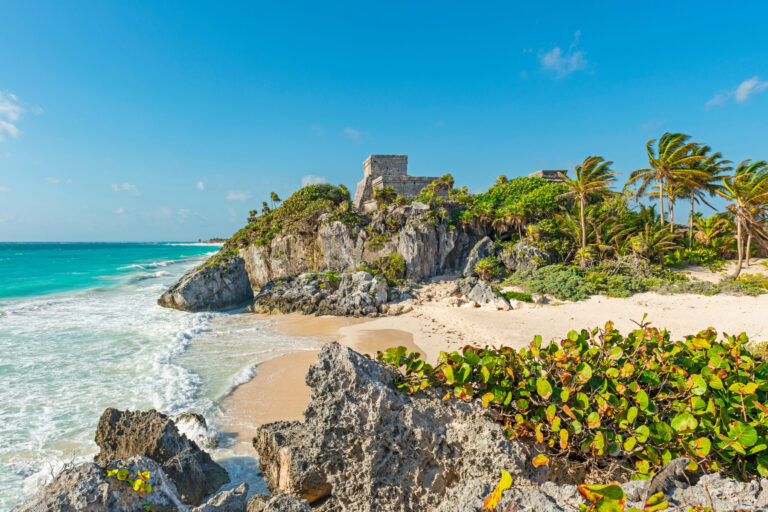
Mayan ruins on Cozumel
WHAT TO PACK WHEN YOU GO DIVING IN COZUMEL
Swimwear: You’re going swimming, so best pack your swimsuit! If it’s too hot for a wetsuit, We also recommend wearing a long-sleeved t-shirt and leggings to protect yourself from the sun.
Snorkelling gear: masks, snorkels, and fins are usually provided by the dive shop but if you have your own gear, feel free to bring it!
Top tip: it sounds gross, but if you spit in your goggles and then rinse them afterwards, it’ll stop them from fogging up!
Towel: You won’t need to dry off, as you’ll be in and out of the water all day. But a towel or a shirt is great to cover your shoulders whilst on the boat and help you to avoid sunburn.
Camera: You’ll want a GoPro or similar underwater camera to capture memories of all the incredible wildlife you’ll encounter!
Water Bottle: Mexico is hot and humid, and you’ll be out in the sun all day, so it’s really important to stay hydrated. You should drink plenty of water before and after your dives. Keeping hydrated can also stop you getting sunburned so badly.
Snacks: Diving can be exhausting and you will burn more calories than you think. Most dive shops offer a small snack between dives, but bring more if you think you’ll need it! I’m speaking from experience when I say things are more fun when you aren’t ‘hangry’. If you do go with Barefoot Dive Centre, they offer a really good lunch between dives!
Extra Cash: Most tour operators will include everything (transportation, equipment, guides, and lunch) in their price, but you may wish to leave a tip if you think they did a good job. Tips are appreciated but definitely not expected!
Dry bag: Important for keeping all the stuff I just mentioned dry!

Hanging out at the beach on a non-dive day
OTHER AMAZING THINGS TO DO IN COZUMEL
We loved Cozumel! This island is large, and although most people visit for diving or resort tourism, there’s still a lot to do. Here were our favourite things, other than diving of course.
#1 RELAX AT PLAYA PUNTA MORENA
The main town, San Miguel de Cozumel, doesn’t have much in the way of beaches. And most of the beaches within walking distance are taken over by resorts. But, if you hire a scooter and head to the other side of the island, you’ll discover some beautiful spots to relax, our favourite of which was Playa Punta Morena.
#2 TRY OUT SURFING
Whilst Mexico’s Caribbean sea isn’t as well known for its surf scene as, say, El Salvador or Nicaragua, you can still try out this sport at Surf School Nacho! The surf spot offers lessons, and hourly board rental if you want to take to the waves.
#3 VISIT PUNTA SUR ECO BEACH PARK
If you’re feeling flush and want to enjoy easy on-offer activities, head to Punta Sur Eco Beach Park. This natural reserve, with flora, fauna and lagoon systems, is the ideal place for nature lovers. There are also white sandy beaches and turquoise waters, where you can rent kayaks. Or, relax with a Margarita and treat yourself to a massage.
#4 EXPLORE SAN GERVASIO ARCHEOLOGICAL SITE
Although not as popular as Chichén Itzá, these ancient Mayan ruins are definitely worth exploring. Noteworthy in their own right, this is the site where Mayan women paid tribute to the goddess of love and fertility. You’ll be able to see pre-Colombian Mayan archeology without the hustle and bustle of tourists at Chichén Itzá.
THINGS TO AVOID IN COZUMEL
#5 SWIM WITH DOLPHINS AT CHANKANAAB BEACH ADVENTURE PARK
Come on guys, if you’re reading this and you want to swim with cool wildlife, just go diving. Swimming with captive dolphins isn’t ethical wildlife tourism. We know better than that, don’t we.
Any ‘swim with [insert animal here] experience’ should be a big red flag! These animals should bewild, but instead, they are in captivity and their behaviour is being changed by humans, for our entertainment. If you want to see dolphins, we recommend booking onto a snorkelling or diving tour. You don’t need to support unethical wildlife practises to see large ocean wildlife.
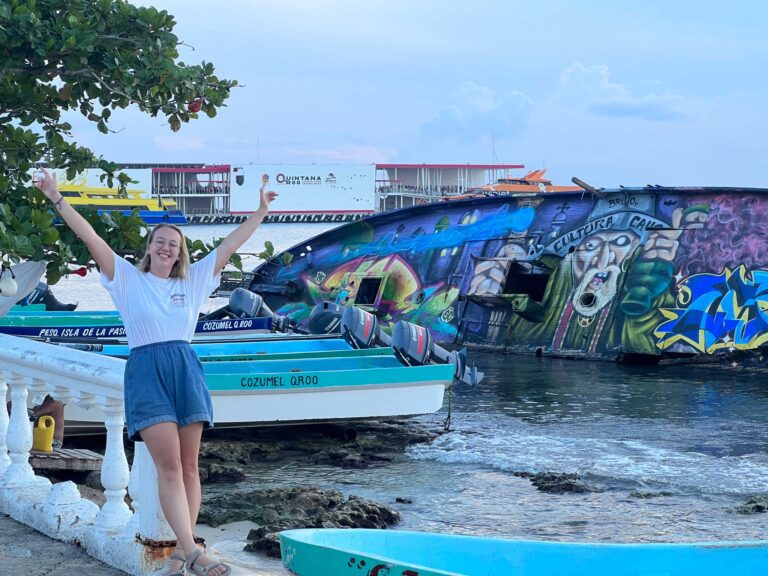
Colourful Cozumel
HOW TO GET TO COZUMEL
Planning on diving in Cozumel? Luckily, getting to Cozumel is relatively straightforward, and there are several options available depending on your preferences and budget.
GETTING TO COZUMEL BY BOAT
The easiest way is to get to Cozumel is by ferry from Playa del Carmen. Regular ferries operate between Playa del Carmen and Cozumel. The ferry ride takes about 30-45 minutes. Two main ferry companies, Ultramar and Winjet, offer frequent daily crossings.
Playa del Carmen is around an hour’s drive from Cancun International Airport. It is easily accessible by a safe, air-conditioned public coach.
GETTING TO COZUMEL BY AIR
Many major airlines, especially those basedin the USA, offer direct flights to Cozumel International Airport (CZM).
If a direct flight is not available, you can fly into a major hub such as Cancun International Airport (CUN) or Mexico City, where you can change for a smaller domestic flight.
Honestly, there’s really no point doing this! It’s not cheap, not sustainable, and not worth the hassle! Much more fun to take one flight to Mexico, and hop on one of the frequent and reliable ADO coaches to the ferry terminal.
LIKE IT? PIN IT!
SAVE THIS POST TO YOUR PINTEREST BOARD TO COME BACK LATER
Disclaimer: The information and advice provided in this blog are the author’s opinions and based on their personal experiences. All information was accurate at the time of writing. However, things can change quickly, so always double-check current conditions and guidelines before setting out. Remember, your travels and safety are your own responsibility, and this blog can not be held responsible for anything that might happen on your adventures! Always exercise caution and good judgment. Oh, and don’t forget to get travel insurance! Happy travels!
This post may contain affiliate links (yay for transparency!) This means that I will earn a small commission, at no additional cost to you, if you click the link and choose to buy the product. I only link to stuff I have personally bought and found useful and never endorse crap. Your support helps keep the site going, thank you!
Alice
Alice is a UK travel blogger who advocates sustainable travel and being more eco-conscious on a budget. She loves coffee, her houseplants and summiting mountains.
You May Also Like
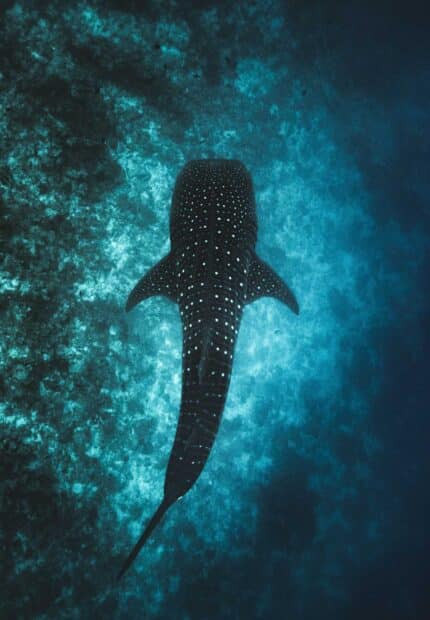
Is swimming with whale sharks ethical in Mexico?
December 9, 2023
Diving Egypt’s Thistlegorm Wreck: the ULTIMATE guide
June 1, 2024